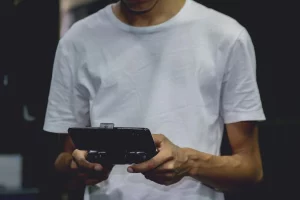How to Fix a Phone Charger Port: All Methods Explained


How to Fix a Phone Charger Port: All Methods Explained


Introduction
A damaged or malfunctioning phone charger port can be a frustrating issue that hinders your ability to charge your device and stay connected. However, before you rush to replace your phone or spend money on professional repairs, there are several methods you can try to fix the charger port yourself. In this comprehensive guide, we will explore various techniques to troubleshoot and repair a faulty phone charger port, ranging from simple cleaning methods to more advanced DIY repairs. Remember to exercise caution and follow the instructions carefully to avoid causing further damage to your phone.
Method 1: Clean the Charging Port
Overview:
Sometimes, a dirty charging port can prevent proper connection and charging. Dust, lint, and debris can accumulate in the port over time, leading to poor contact with the charging cable. Cleaning the charging port is the first and easiest method to attempt before exploring more complex solutions.
Instructions:
- Power off your phone and remove the charging cable.
- Inspect the charging port carefully to identify any visible debris or dust.
- Use a small, soft brush (e.g., a toothbrush with soft bristles) to gently clean the port and dislodge any particles.
- If there are stubborn debris or lint, you can use compressed air to blow them out. Ensure you hold the can upright to prevent any moisture from entering the port.
- Once the port is clean, reinsert the charging cable and check if the issue is resolved.
Method 2: Check the Charging Cable
Overview:
Sometimes, the problem may not lie with the phone charger port but with the charging cable itself. A damaged or frayed cable can prevent a stable connection and interrupt the charging process.
Instructions:
- Inspect the charging cable for any signs of damage, such as frayed wires, bent connectors, or visible wear.
- If you notice any issues, replace the charging cable with a new, high-quality one that is compatible with your phone.
- Test the new cable with your phone to see if the charging problem persists.
Method 3: Restart Your Phone
Overview:
Sometimes, minor software glitches can cause charging issues. Restarting your phone can help resolve these temporary problems.
Instructions:
- Power off your phone completely.
- Wait for a few seconds and then turn it back on.
- Once your phone is powered on, try charging it again to see if the problem is resolved.
Method 4: Use a Different Power Source
Overview:
The issue might not be with the phone or cable, but rather the power source you are using. The outlet or USB port you are plugging the charger into may be faulty.
Instructions:
- Try charging your phone using a different power outlet or USB port.
- If you were using a wall charger, try charging your phone with a computer’s USB port or vice versa.
- If your phone starts charging when connected to a different power source, the original power outlet or USB port may be the problem.
Method 5: Perform a Battery Pull (For Removable Battery Phones)
Overview:
For phones with a removable battery, a simple battery pull can help reset the phone’s charging system and fix minor issues.
Instructions:
- Power off your phone.
- Remove the back cover and take out the battery.
- Wait for a few seconds before reinserting the battery.
- Put the back cover back on and power on your phone.
- Check if the charging problem is resolved.
Method 6: Update Your Phone’s Software
Overview:
Outdated software can sometimes cause charging problems. Updating your phone’s software to the latest version can fix bugs and glitches that may be affecting the charging port.
Instructions:
- Go to your phone’s settings and navigate to the “Software Update” or “System Update” section.
- Check for any available updates and install them if prompted.
- After the update is complete, restart your phone and check if the charging issue is resolved.
Method 7: Enable Safe Mode
Overview:
Third-party apps can sometimes interfere with the charging process. By enabling Safe Mode, you can determine if the problem is caused by a specific app.
Instructions:
- Press and hold the power button to bring up the power options on your phone.
- Tap and hold the “Power Off” option until the “Safe Mode” prompt appears.
- Select “OK” to enter Safe Mode.
- In Safe Mode, only pre-installed apps will be available, and third-party apps will be temporarily disabled.
- Try charging your phone while in Safe Mode to see if the issue persists.
- If your phone charges normally in Safe Mode, the problem may be caused by a third-party app. Identify and uninstall recently installed apps to find the culprit.
Method 8: Check for Water Damage
Overview:
Water damage can cause charging issues in phones. Checking for water damage is crucial, especially if your phone has been exposed to moisture or submerged in liquid.
Instructions:
- Look for signs of water damage, such as a red or pink indicator on the phone’s battery or near the charging port.
- If you suspect water damage, power off your phone immediately and do not attempt to charge it.
- Place your phone in a bag of uncooked rice or silica gel packets to absorb moisture.
- Leave the phone in the bag for at least 24 hours before attempting to charge it again.
- If the charging issue persists after drying, consider seeking professional repairs or contacting your phone’s manufacturer for further assistance.
Method 9: Reset Your Phone to Factory Settings
Overview:
If none of the previous methods work, performing a factory reset can help eliminate software-related issues that may be affecting the charging port.
Instructions:
- Back up all your important data and files to avoid data loss during the reset.
- Go to your phone’s settings and navigate to the “System” or “General Management” section.
- Look for the “Reset” or “Factory Data Reset” option.
- Select “Reset Phone” or “Erase All Data” and confirm the action.
- After the reset is complete, set up your phone as a new device and check if the charging problem is resolved.
Method 10: Seek Professional Repair
Overview:
If all else fails or if you are uncomfortable attempting DIY repairs, it may be best to seek professional help from a certified technician or the phone’s manufacturer.
Instructions:
- Contact your phone’s manufacturer or visit an authorized service center to inquire about repair options.
- Explain the issue you are experiencing with the charging port and provide any relevant information about the phone’s condition.
- If your phone is still under warranty, inquire about warranty coverage for repairs.
- Alternatively, you can seek the services of reputable third-party repair shops that specialize in phone repairs.
Method 11: Use Isopropyl Alcohol for Cleaning
Overview:
In some cases, the charging port may have residue or corrosion that hinders the connection between the charging cable and the phone. Using isopropyl alcohol can help clean the port and improve the contact.
Instructions:
- Power off your phone and remove the charging cable.
- Dip a cotton swab or a small brush in isopropyl alcohol (rubbing alcohol).
- Gently insert the cotton swab or brush into the charging port and lightly scrub the area to remove any dirt, grime, or corrosion.
- Let the charging port air dry for a few minutes.
- After the port is dry, reinsert the charging cable and check if the connection has improved.
Method 12: Use a Toothpick
Overview:
For stubborn debris that cannot be removed with a brush, a toothpick can be used to carefully dislodge the dirt or lint without causing damage to the charging port.
Instructions:
- Power off your phone and remove the charging cable.
- Take a wooden toothpick and gently insert it into the charging port.
- Use the toothpick to scrape away any visible debris or lint carefully.
- Be cautious not to apply too much pressure or use metal objects, as this could damage the port.
- Once the port is cleaned, reinsert the charging cable and check if the connection is restored.
Method 13: Adjust the Charging Cable
Overview:
Sometimes, the charging cable may not make a proper connection due to a slight misalignment. Adjusting the cable can help establish a stable connection.
Instructions:
- Power off your phone and remove the charging cable.
- Gently examine the charging port and the charging cable’s connector for any signs of damage or misalignment.
- If the connector seems bent or damaged, consider replacing the cable with a new one.
- If the cable’s connector looks fine, insert it into the charging port carefully and adjust its position slightly to find the most secure and stable connection.
- Try different angles and positions to ensure the cable fits snugly into the port.
- Once you find the best position, connect the cable and check if the charging issue is resolved.
Method 14: Check for Bent Pins
Overview:
In some cases, the charging port’s pins may get bent or misaligned, preventing the charging cable from making proper contact. Inspecting the pins can help identify and fix the issue.
Instructions:
- Power off your phone and remove the charging cable.
- Using a magnifying glass or a flashlight, carefully inspect the inside of the charging port for any bent or misaligned pins.
- If you notice any bent pins, do not attempt to straighten them yourself, as this can cause further damage.
- Instead, take your phone to a professional technician or an authorized service center for proper repair.
- If the pins appear fine, proceed with connecting the cable and check if the issue is resolved.
Method 15: Perform a Hard Reset
Overview:
If your phone still experiences charging problems, a hard reset can help resolve software-related issues that may be affecting the charging port.
Instructions:
- Back up all your important data and files to avoid data loss during the reset.
- Make sure your phone is fully charged or has enough battery to complete the reset process.
- Refer to your phone’s user manual or search online for the specific steps to perform a hard reset for your phone model.
- Follow the instructions carefully to reset your phone to its factory settings.
- After the reset is complete, set up your phone as a new device and check if the charging issue is resolved.
Conclusion
A faulty phone charger port can be a frustrating problem, but with these comprehensive troubleshooting methods, you can attempt to fix the issue yourself. From cleaning the charging port to checking for bent pins, these techniques address various potential causes of charging problems. Remember to handle your phone with care during the process and seek professional help if you are unsure or uncomfortable with DIY repairs. By following these steps, you may be able to restore your phone’s charging functionality and avoid the need for costly repairs or replacements.








